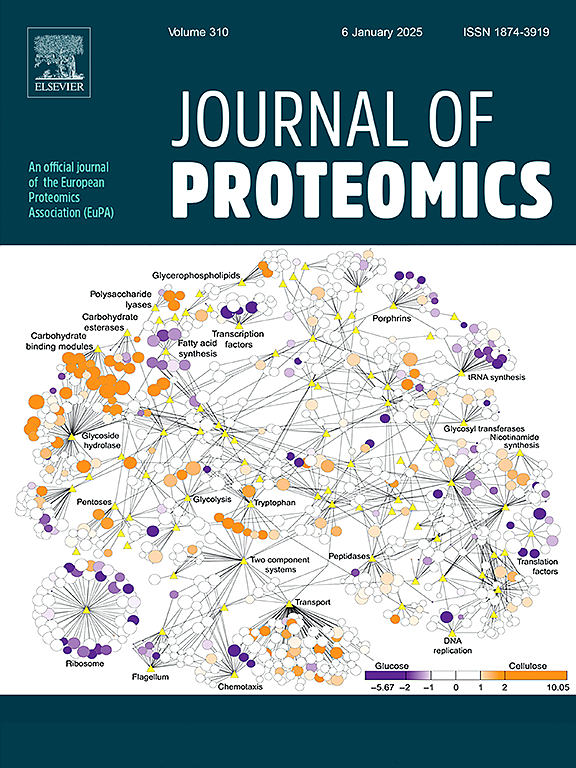A perspective on integrating digital pathology, proteomics, clinical data and AI analytics in cancer research
IF 2.8
2区 生物学
Q2 BIOCHEMICAL RESEARCH METHODS
引用次数: 0
Abstract
Nearly 40 % of individuals will be diagnosed with cancer in their lifetime, translating to an estimated 20 million new cases annually. Despite remarkable therapeutic advances, only 15–20 % of patients achieve durable responses to immunotherapy, and the high cost of treatment (illustrated by immune checkpoint inhibitors like pembrolizumab and nivolumab, totaling roughly $191,000 per year) remains a formidable global challenge. The convergence of digital pathology, high-throughput molecular profiling, and advanced computational strategies has the potential to transform cancer research. By integrating high-resolution morphological data with proteomic, transcriptomic, and spatial molecular insights, we can elucidate the complex interplay between tumor cells and their microenvironment. In this perspective, we review how emerging techniques, from AI-driven image analysis to deep visual proteomics, can accelerate biomarker discovery, refine patient stratification, and ultimately improve clinical outcomes. We illustrate these principles with a case study in melanoma, where the integration of digital pathology and deep proteomic profiling uncovered a molecular signature predictive of recurrence in early-stage disease. As these technologies evolve, we foresee a future of precision oncology characterized by the seamless integration of morphological, clinical, and molecular data enabled by AI-driven analytics.
Significance
This perspective represents a pivotal step toward transforming cancer research by bridging the gap between traditional histopathological evaluation and modern molecular analytics. By integrating digital pathology with spatial proteomics and advanced AI-driven analytics, our approach provides a multidimensional view of tumor biology that captures both morphological nuances and molecular heterogeneity. This comprehensive framework not only enhances our understanding of the tumor microenvironment but also facilitates the discovery of robust biomarkers for disease recurrence and therapeutic response. Ultimately, our findings underscore the potential of precision oncology to tailor treatment strategies to individual patient profiles, thereby improving clinical outcomes and guiding the next generation of personalized cancer care.

癌症研究中整合数字病理学、蛋白质组学、临床数据和人工智能分析的观点
近40%的人将在其一生中被诊断出患有癌症,这意味着每年估计有2000万新病例。尽管取得了显著的治疗进展,但只有15 - 20%的患者对免疫治疗产生了持久的反应,而且高昂的治疗费用(如pembrolizumab和nivolumab等免疫检查点抑制剂,每年总计约19.1万美元)仍然是一个巨大的全球挑战。数字病理学、高通量分子图谱和先进的计算策略的融合有可能改变癌症研究。通过将高分辨率形态学数据与蛋白质组学、转录组学和空间分子见解相结合,我们可以阐明肿瘤细胞与其微环境之间复杂的相互作用。从这个角度来看,我们回顾了新兴技术,从人工智能驱动的图像分析到深度视觉蛋白质组学,如何加速生物标志物的发现,完善患者分层,并最终改善临床结果。我们用黑色素瘤的一个案例研究说明了这些原则,其中数字病理学和深度蛋白质组学分析的整合揭示了早期疾病复发的分子特征。随着这些技术的发展,我们预见到精准肿瘤学的未来,其特点是通过人工智能驱动的分析实现形态学、临床和分子数据的无缝集成。这一观点通过弥合传统组织病理学评估和现代分子分析之间的差距,代表了转变癌症研究的关键一步。通过将数字病理学与空间蛋白质组学和先进的人工智能驱动分析相结合,我们的方法提供了肿瘤生物学的多维视图,可以捕获形态细微差别和分子异质性。这个全面的框架不仅增强了我们对肿瘤微环境的理解,而且有助于发现疾病复发和治疗反应的强大生物标志物。最终,我们的研究结果强调了精确肿瘤学的潜力,可以根据个体患者的情况量身定制治疗策略,从而改善临床结果并指导下一代个性化癌症治疗。
本文章由计算机程序翻译,如有差异,请以英文原文为准。
求助全文
约1分钟内获得全文
求助全文
来源期刊

Journal of proteomics
生物-生化研究方法
CiteScore
7.10
自引率
3.00%
发文量
227
审稿时长
73 days
期刊介绍:
Journal of Proteomics is aimed at protein scientists and analytical chemists in the field of proteomics, biomarker discovery, protein analytics, plant proteomics, microbial and animal proteomics, human studies, tissue imaging by mass spectrometry, non-conventional and non-model organism proteomics, and protein bioinformatics. The journal welcomes papers in new and upcoming areas such as metabolomics, genomics, systems biology, toxicogenomics, pharmacoproteomics.
Journal of Proteomics unifies both fundamental scientists and clinicians, and includes translational research. Suggestions for reviews, webinars and thematic issues are welcome.
 求助内容:
求助内容: 应助结果提醒方式:
应助结果提醒方式:


